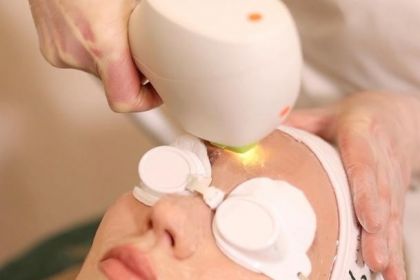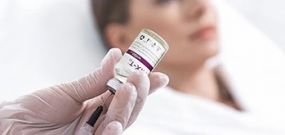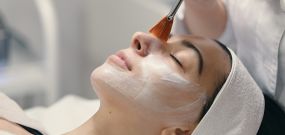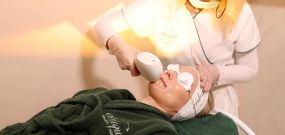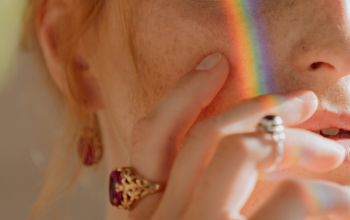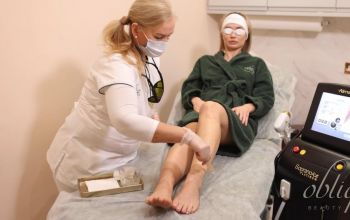Dark spots on the face or body can be really distressing. Not everybody gets them, but for those who do, it can be frustrating. They don't disappear on their own and covering them with foundation is also tough. Here’s why these brown spots appear and how to remove them.
WHAT IS HYPERPIGMENTATION?
Hyperpigmentation is the presence of darker spots or streaks on the skin. Dark skin spots are irregular and are located on different parts of the body or face. They come in a variety of shapes and tones.
In most cases, increased pigmentation doesn’t cause physical discomfort, pain, itching, or other health concerns. The biggest issue with the spots is their unpleasant appearance. Excessive pigmentation on the face is treated like a cosmetic defect. A person feels both psychological discomfort and shy. It’s easier to just not participate in social activities. However, this is not the only reason to start pathology treatments. Hyperpigmentation could indicate issues with the internal body systems as well.
HOW DO DARK SPOTS OCCUR?
Dark spots on the skin occur when the skin produces a higher than usual amount of melanin. Melanin is responsible not only for the colour of our skin but also eyes and hair as well. It is our natural defence against the sun. Melanocyte cells build this pigment to protect the skin from destruction. Melanin is a powerful antioxidant that neutralises solar radiation.
The lower layers of the epidermis produce melanin, and then transports it to the upper layer. There it absorbs sunlight and thus protects the skin. If the skin does not receive sunlight, then it doesn’t produce melanin.
Each time this process is activated in the cells, a small trace of melanin is left behind. Over time, this trace of melanin on the skin accumulates, and a dark spot forms in this place.
WHAT ARE THE MAIN CAUSES OF DARK SPOTS?
Dark spots can be caused by multiple reasons:
- sun exposure
- acne or post-inflammatory scars
- hormonal changes.
A dark spot (formally known as a solar lentigo) is formed by excessive exposure to the sun. When skin is exposed to too much sunlight, melanocytes work harder, producing more pigment than normal, and then dark spots form.
Dark brown spots can also be formed from skin injuries. It can happen after a burn, cut or an insect bite. A dark area or patch may appear when the wound heals. That pigmentation will fade with time if you don't re-injure your skin. Inflammation of the skin can also result in dark spots. Eczema, psoriasis, and acne are just a few of the conditions that cause inflammation.
Often, hormonal changes in the body lead to the formation of brown spots, or melasma. Hormonal changes can occur during pregnancy, with age – during menopause – or with the use of certain medicines, such as birth control. Female hormones provoke the release of melanin. Dark circles appear around the eyes of pregnant women. The presence of brown spots on the faces and bodies of older women is called age-related hyperpigmentation.
In addition, the reasons for dark hyperpigmentation spots can be:
- Genetic factors, like freckles
- Stress that causes metabolic processes to be disrupted and leads to excess melanin production,
- Autoimmune diseases,
- Endocrine system anomalies,
- or gastrointestinal problems.
PREVENTING DARK SPOTS
The best way to prevent hyperpigmentation is to limit the time spent outside and to wear sunscreen. When applied daily, sunscreen helps to prevent new spots from forming and also to clear up existing ones.
But what if the stains are already there? What is the best way to get rid of hyperpigmentation?
Age spots can be removed in different ways:
- Chemical peeling. It involves the use of acid solutions that lead to the removal of superficial skin layers. Chemical peeling is suitable for superficial hyperpigmentation.
- Phototherapy is a popular method. It exposes pigmented skin to light waves without ultraviolet rays. Due to this effect, the melanin is destroyed, and the skin colour is evened out.
- Laser therapy has the same effect as phototherapy but is more productive. The intensity and depth of the laser pulse are adjusted by the dermatologist to ensure that healthy tissues around are not damaged. The technique can be done on both the epidermis and the dermis of the skin.
Professionally performed dermatological procedures allow you to completely or partially remove dark pigmentation spots. The dermatologist chooses the optimal method based on the patient's history and individual traits.





